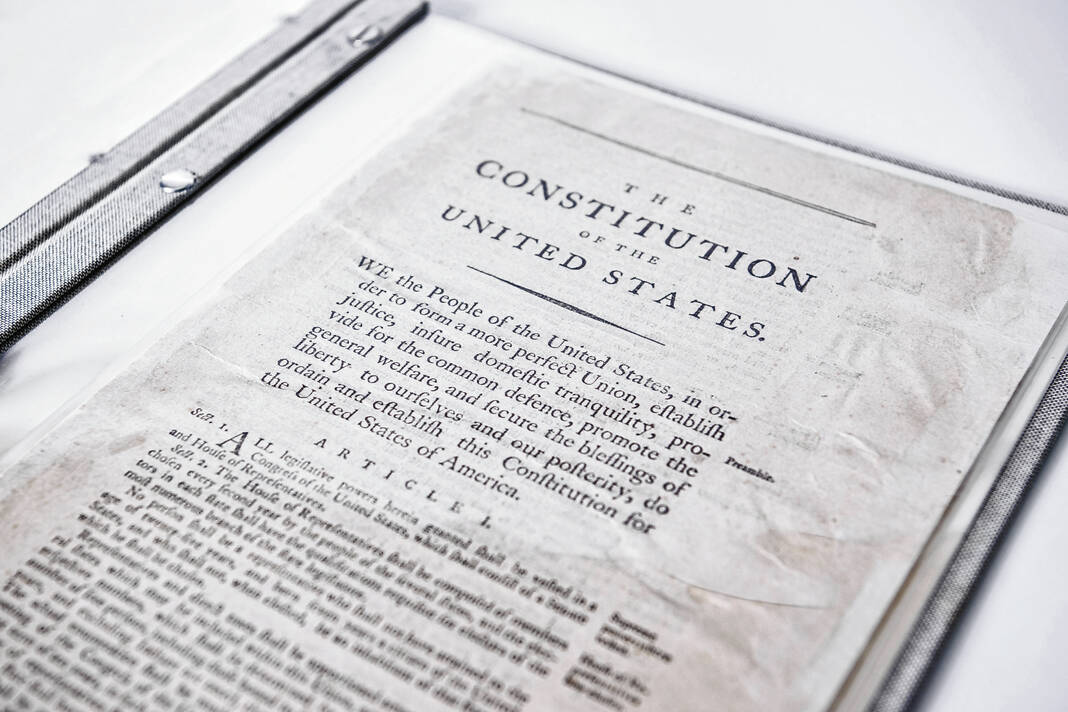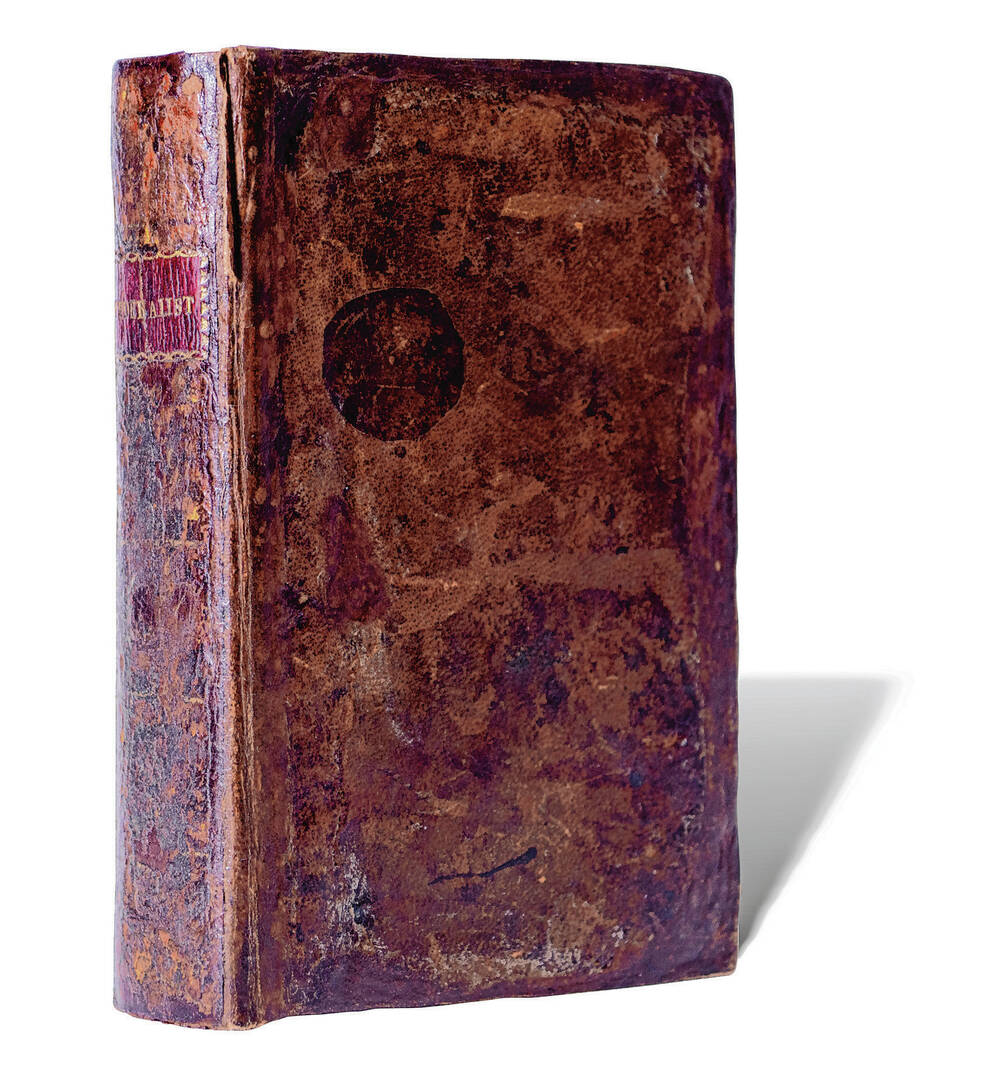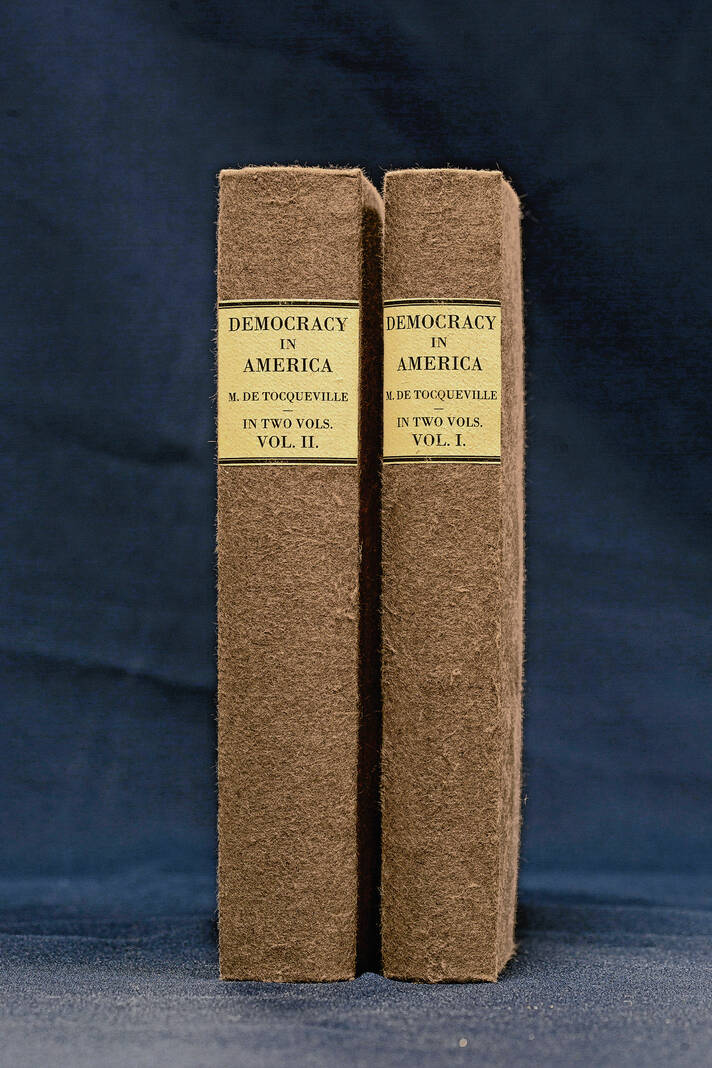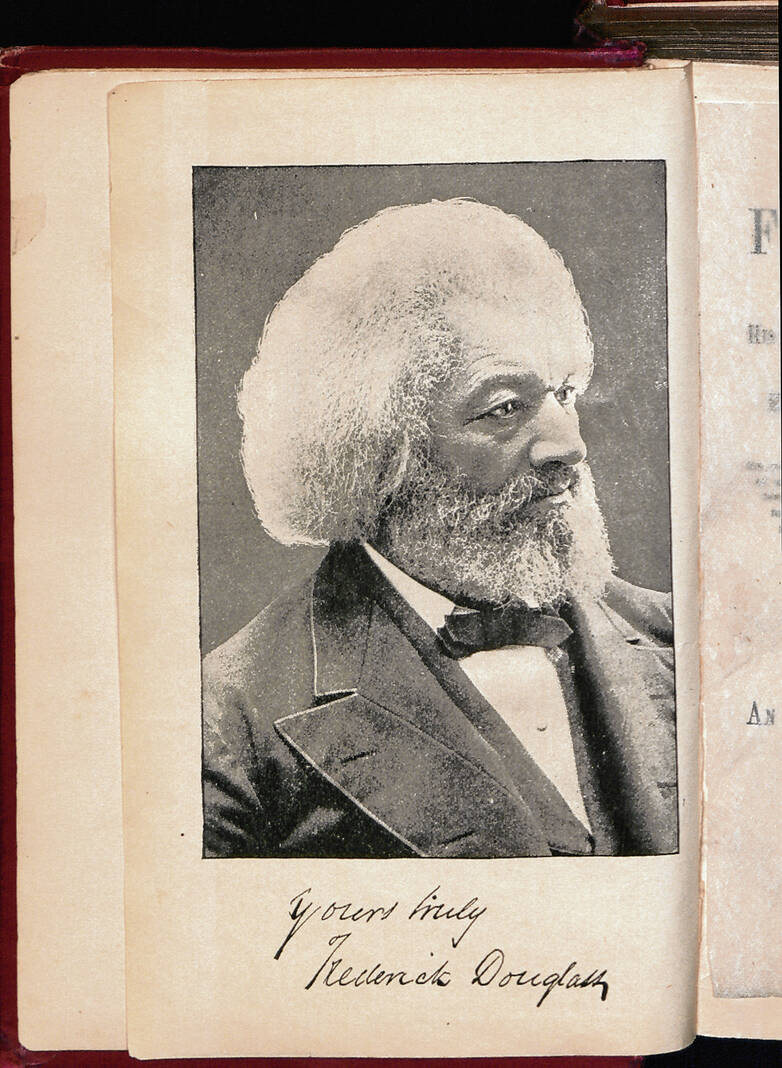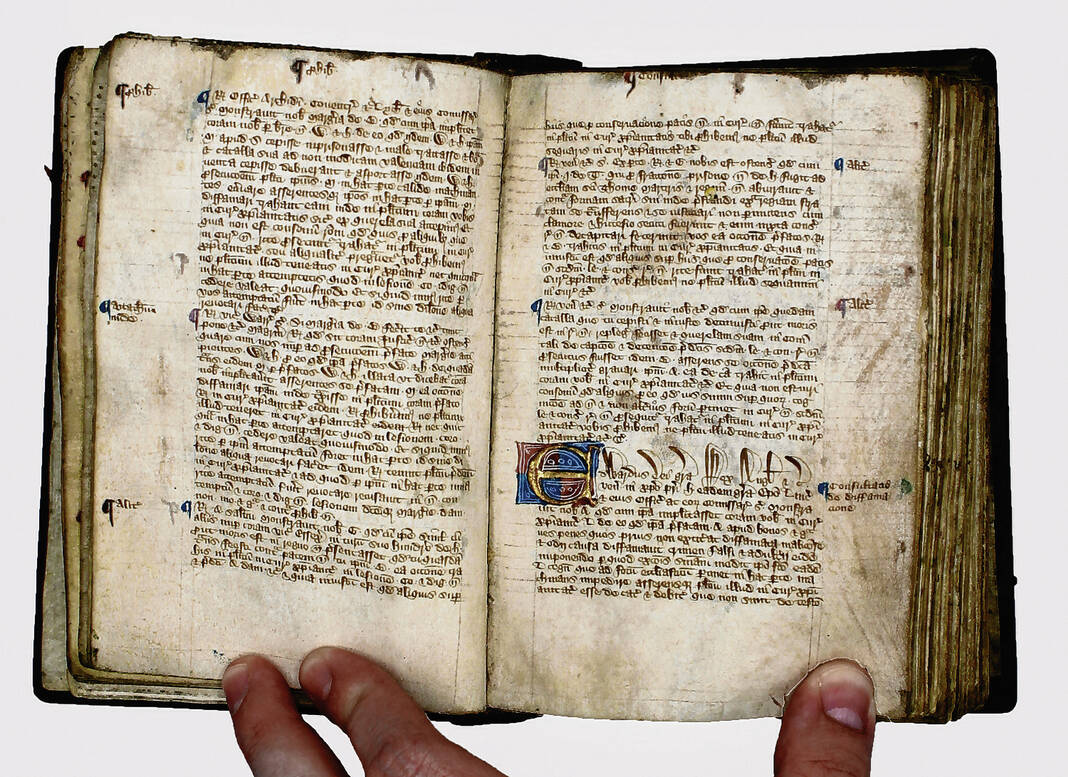Inside the weathered brown bindings and on yellowed sheets of paper, the course of American democracy comes alive.
Visitors to the Eugene and Marilyn Glick Indiana History Center can peer at a first edition of Abraham Lincoln’s “Gettysburg Address,” or read the words of an edition of the Magna Carta from 1350.
On a first edition printing of the U.S. Constitution, the words, “We the People of the United States, in order to form a more perfect Union…” send shivers down the spine.
“So often, when we hear about these ideas and values, we are given an oversimplified view. I think it’s important for people to read these items in their full text, firsthand, instead of hearing what this person says it’s about or that person says it’s about. Read it for yourself,” said Jody Blankenship, president and CEO of the Indiana Historical Society.
These and other treasures comprise the newest exhibit at the Indiana History Center. “Documents That Shaped America” brings together a trove of historical written works that have influenced the country’s founding and its subsequent path forward.
Organizers intend to open people’s eyes to the foundation of many of our rights and beliefs, as well as sparking the desire to learn more about these ideas, Blankenship said.
“I hope it generates curiosity. Exhibits are not the same as going into the archive and digging into this stuff — it’s more of a 10,000-foot view. But I want this exhibit to come back or (for people) to visit the library, where they can see more,” he said.
The works included in “Documents That Shaped America” come from the Remnant Trust collection. A public educational foundation, the trust uses its growing collection of manuscripts, first edition and early works to detail the topics of individual liberty and human dignity.
Some of the pieces date from as early as 2500 B.C.
Blankenship first learned about the Remnant Trust more than a year ago. The organization had been founded in Indiana in 1997, and though the collection was being housed at Texas Tech University, he started investigating with trust leaders how to bring it back home.
While those discussions were happening, Blankenship and others were examining the collection and discovering what was in it. Historical society officials decided that regardless of what happened with moving the items back to Indiana, it would be a fabulous opportunity to have a exhibit of certain documents at the Indiana History Center.
“It would talk about some of the ideas that are communicated through the books about America’s founding — what were the values and different voices and ideas that led to the formation of the country, and how have we over time worked to progress those ideas, to live up to the ideas that we had in the country,” Blankenship said.
The Remnant Trust collection has 1,557 items in it, and no exhibit could accommodate all of those documents, Blankenship said. Officials opted for the most impactful 30 to 35 items that covered a span of history; those pieces not put into the exhibit could still be viewed as the historical society’s William Henry Smith Memorial Library.
Taking documents such as the Constitution, the Magna Carta or “The Life &Times of Frederick Douglass,” historical society organizers crafted an exhibit that helps explain and break down the ideas and values discussed in them.
“We found the things that were most telling of a story; there could be many things that told that story, but we’re were looking to weave together a narrative with the materials on hand,” Blankenship said.
Displays explain how the Bible influenced the Constitution, and breaks down the debate between a strong federal government and strong states that dominated the Federalist and Anti-Federalist arguments.
A section of the exhibition titled “Voices” looked at broader culture and literature, helping to paint a picture of what was happening in society during the formation and growth of the United States. Works such as “The Origin of Species” by Charles Darwin
and “Frankenstein” by Mary Shelley give context to the world that early America was developing in.
Finally, the “Conflict” section deals with the rights and responsibilities detailed in the Constitution and Bill of Rights.
“It looks at how those were expanded to more people; in particular, the two points of conflict we go into is freedom from slavery and suffrage,” Blankenship said. “Those are two major issues in U.S. history, so we looked more deeply at those and how they helped shape the progression of American ideas of democracy and freedom.”
“Documents That Shaped America” is on display through Jan. 14, 2023 at the Indiana History Center. Officials hope that by seeing these documents in person, the exhibit can help foster a deeper understanding and appreciation for our ideals.
“We like to oversimplify things these days, because it fits whatever medium we’re communicating through. History isn’t simple; it’s very complicated and complex. And in that, it becomes very interesting,” Blankenship said. “Understanding that complexity of history, we build our sense of tolerance and empathy, and begin to understand things through multiple perspectives.”
IF YOU GO
“Documents That Shaped America”
What: An exhibit examining significant historical works that influenced the Founding Fathers and continue to inform our lives today.
Where: Eugene and Marilyn Glick Indiana History Center, 450 W. Ohio St., Indianapolis
When: Through Jan. 14, 2023
Hours: 10 a.m. to 5 p.m. Tuesday through Saturday
Tickets: $13 for adults, $12 for seniors 60 and older, $5 for youth ages 5-17, free for children under 5
Information: indianahistory.org


